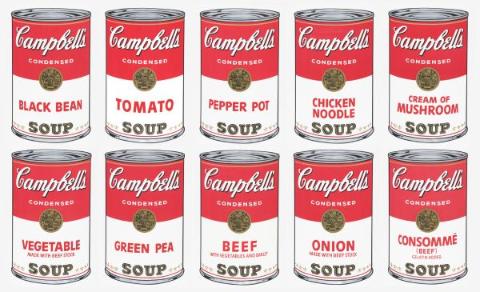Early Days of Media Agency Consolidation Recalled in Campbell Soup 1994 Review

In 1994, I consulted with the Campbell Soup Company on its media planning and buying review, overseeing the process that consolidated four media buying agencies of record into a single dedicated media buying and planning unit within the Foote Cone & Belding operation. The following Classic Jack commentary is edited from my original overview developed for Campbell Soup, with confidential information deleted.
The recent economic turn-about in the television industry shifts the market from what was expected to be a long-term buyers' marketplace to a sellers' market. Although broadcast network ratings erosion will continue and inventory supply is expanding through new broadcast and cable networks, demand for the established networks has strengthened and is expected to continue to be strong. Whether economic conditions are strong or weak, it is clear that the industry is undergoing radical upheaval.
The traditional control of agency network buyers over the network sales organizations is significantly eroding, as networks develop marketing organizations structured to expand direct client relationships, as networks generate secondary revenue streams through program ownership, and as the largest advertisers increasingly consolidate media buying.
Media execution today and in the future cannot be a business in which advertisers are dependent upon partnerships and relationships between their agencies and media companies. Rather, it is a business of alliances and partnerships directly between advertisers and media companies. Media planning and buying groups must be directly and exclusively responsive to building their clients' partnerships and relationships with media -- not their own.
Each advertiser must assure that its own specific issues are both strategically and tactically the focus of attention. It can no longer be a part of it's agency's whole: rather the advertiser must plan its media strategies, build its own network of relationships, partnerships and alliances to implement these strategies, and evaluate the performance of its media based upon the successful implementation of these strategies.
The process of radical structural change in the industry has already begun. Agencies recognize the need to restructure their businesses for the future, and they are rapidly reorganizing their media departments to respond to both economic realities and competitive necessity. The key element for a major advertiser to consider today is how to best obtain and maintain direct control over the media process to maximize both the effectiveness and efficiencies. The more control that can be exerted over the elements that influence the ultimate negotiating process, the more likely that media buys can be both effective and efficient. In the past, control was exerted by relying on the buying clout of agency media departments and their long-term relationships with media sellers. This no longer holds water. It is outmoded and unrealistic in today's market and the market of the future.
*Agencies are consolidating their media organizations and moving inexorably toward five-six mega-media buying groups. The acquisition of Western Media (now Initiative Media) by Interpublic Group and the consolidation of media in the Saatchi & Saatchi (now part of Publicis)organization are just the first steps in the movement within the U.S. toward the European media structure, where the major agency groups consolidated media buying several years ago.
*Many agencies have unbundled their media departments into independent profit centers, shifting them to service/support organizations without bottom-line accountability to total agency profit centers. The end result will be that several of these unbundled units will be merged together. This will give a significant competitive advantage to companies that are part of international multi-agency corporations, such as Omnicom, WPP and Saatchi.
*Dynamics in the domestic U.S. media business, both competitive and regulatory, will move media pricing toward parity. The ability to generate media efficiencies will result from planning intelligence and single-client "clout" rather than from media buying organizations' clout. The historical advertiser perspective of empowering agencies and media buying services to combine multi-client spending in order to negotiate "agency" prices is no longer a relevant model. Networks and other media companies will evaluate pricing decisions based on each individual advertiser's relationship with the media company, including share considerations, total spending, relationships, marketing alliances and negotiating strategies. Pricing leverage will be exerted more through each individual advertiser's planning considerations than from media buying execution. The need for media planners to have direct contact and input from the sellers (and vice versa) will increase exponentially.
*Mega-media organizations will ultimately differentiate themselves through planning and intelligence capabilities and through marketing/promotional capabilities, rather than through pricing advantages. The media organizations that are forward thinking will emphasize planning, creativity, technology and international capabilities in their presentation rather than cost-efficiency. The industry trends toward consolidation of media buying are economic rather than strategic. Eventually, major advertisers will realize that, unless they are solely interested in "gross eyeball delivery," their interests are best served by media units that are fully integrated with marketing and creative teams.
Jack Myersis available to present his vision for the future of media, advertising and marketing at your corporate meetings and events. Contact jm@jackmyers.comand visit www.jackmyers.com for more information.


